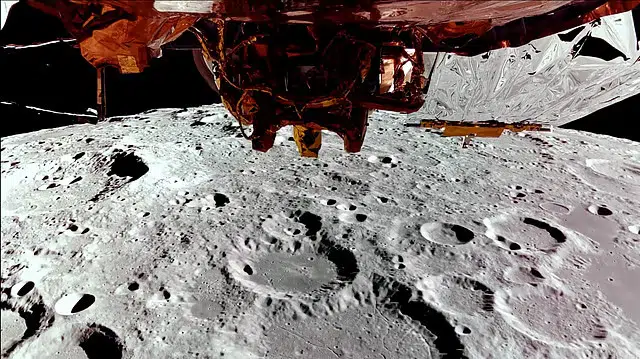The race to rule the Moon is intensifying as major global powers, including the US, China, Russia, India, Japan, and the EU, vie for dominance in lunar exploration. Recent breakthroughs in private lunar missions, such as the success of Firefly Aerospace’s Blue Ghost, are reshaping the future of space exploration.
Private Lunar Exploration: A Breakthrough for Space Technology
Private companies are making waves in space exploration, especially as the infrastructure for lunar missions takes shape. Firefly Aerospace recently achieved a historic milestone, with its Blue Ghost Mission 1 successfully landing the first privately built spacecraft on the Moon. This achievement sets a new pace in the race for lunar dominance, signaling the rise of private industry in space exploration alongside government-led programs.
The Blue Ghost lander touched down on March 2, 2025, at 3:34 am US Eastern Time, near Mons Latreille in the Mare Crisium region of the Moon. This marks the first time a private company has managed to land a spacecraft upright, demonstrating significant advancements in precision landing technology. This achievement is crucial for future long-term lunar missions and sustainability.
Why It Matters: The Future of Lunar Economy
The Moon’s untapped resources present opportunities for a burgeoning lunar economy. The first company to establish key infrastructure could dominate this new frontier. With advancements in space travel, robotics, and AI, private companies are playing an increasingly important role in lunar exploration, pushing forward the boundaries of what is possible in space technology.
The success of Firefly’s Blue Ghost mission comes on the heels of Intuitive Machines’ Athena lander, which also reached the Moon’s surface but faced challenges due to landing position. However, it provided valuable data for the future of lunar exploration, particularly near the lunar south pole, a region rich in resources yet challenging to explore.
Firefly’s Groundbreaking Technology
One of the major highlights of Blue Ghost’s mission was its precision landing. The spacecraft autonomously navigated the Moon’s rugged terrain, slowing from thousands of miles per hour to just two mph before its upright touchdown. The first image from the lander showcased a rocky, cratered landscape, emphasizing the complexity of selecting a safe landing site.
Blue Ghost is equipped with advanced scientific instruments, including a lunar soil analyzer, radiation-tolerant computer, and a system testing the feasibility of global satellite navigation on the Moon. These tools will aid in studying lunar dust levitation and the unique conditions of lunar sunsets and eclipses.
Key Experiments: Advancing Lunar Research
The Blue Ghost mission is part of NASA’s Commercial Lunar Payload Services (CLPS) program, which aims to collaborate with private companies to lower the cost of lunar exploration and support the Artemis program’s long-term goal of returning astronauts to the Moon.
With its cutting-edge technology, Blue Ghost will conduct a range of experiments, including capturing high-definition images of a total solar eclipse on March 14, 2025, and documenting a lunar sunset. Another experiment will explore how lunar dust behaves under solar radiation, an effect first observed by Apollo astronaut Eugene Cernan.
The Road Ahead: The Future of Lunar Exploration
The success of Blue Ghost is a major step forward for private lunar exploration, but it also signals a new era of space technology. As private companies like Firefly Aerospace, Intuitive Machines, and others continue to push the boundaries of what’s possible on the Moon, the future of lunar exploration is becoming increasingly commercialized. With significant technological leaps and international competition, the race for the Moon is now more exciting than ever.
As we move into this new frontier, the question remains: who will ultimately rule the Moon? Only time will tell, but one thing is certain—this is just the beginning of a new era in lunar exploration.
YAllA TV – www.yallatv.ae





